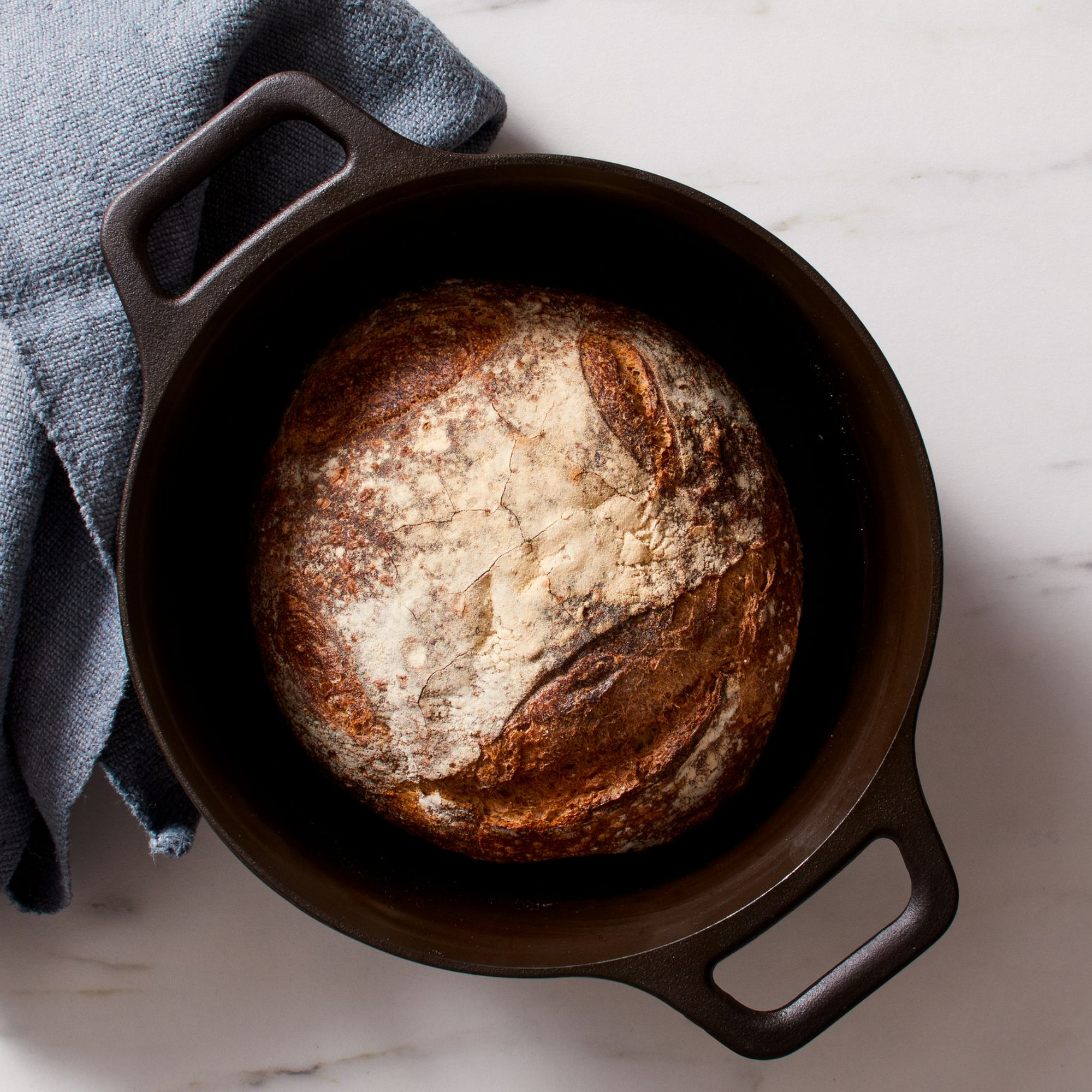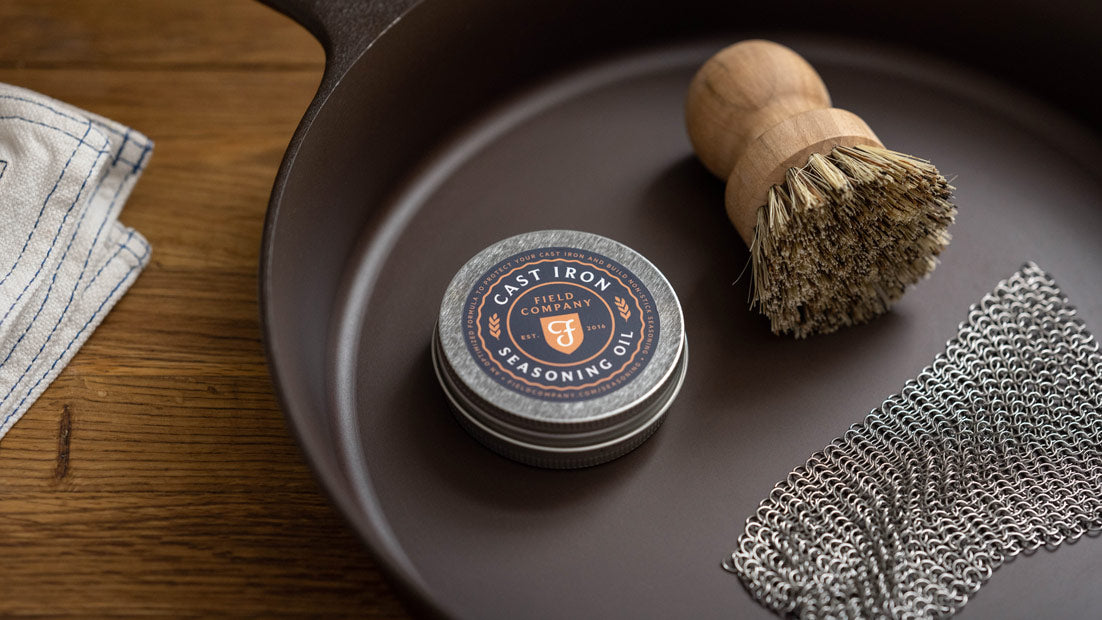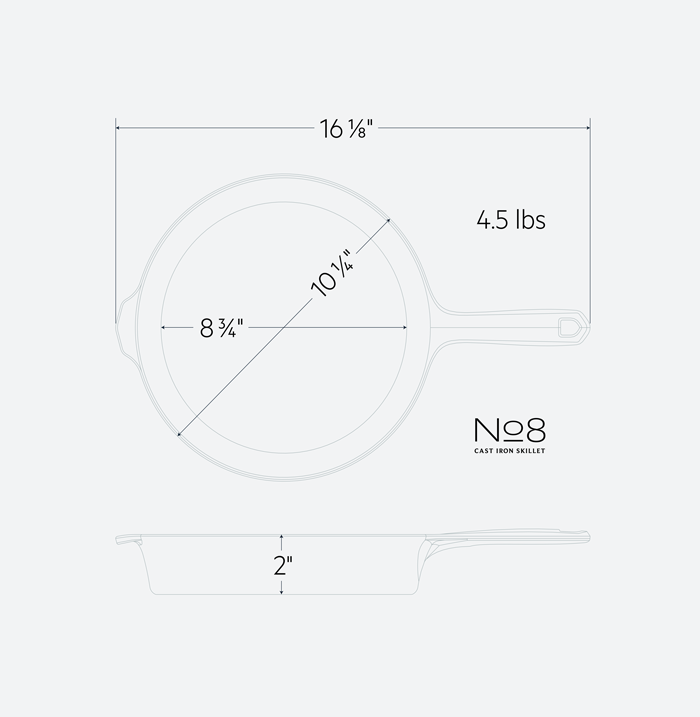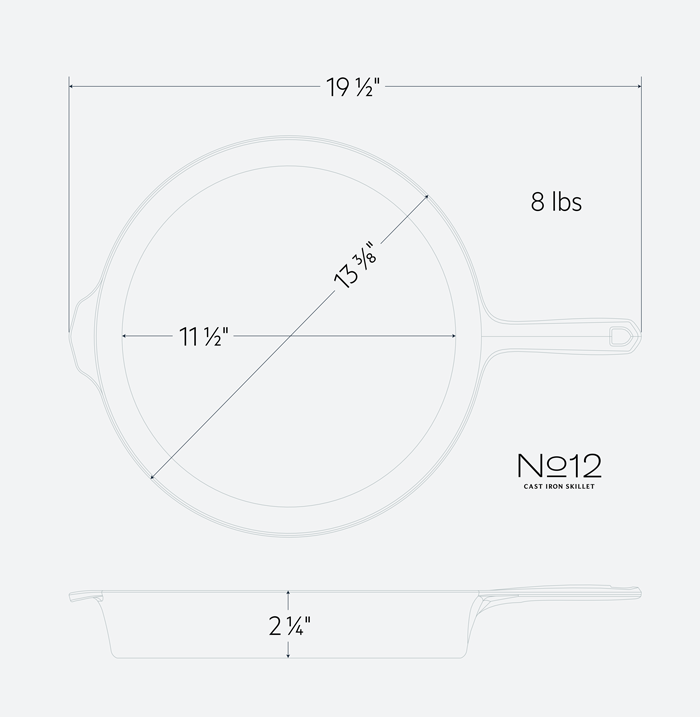













How is smoother cast iron different?
Vintage cast iron pans, the type prized for their smooth nonstick surfaces, used to be finished by hand. Today, most manufacturers produce rough, pebbly skillets to save cost. That's not all bad—it just takes longer to build a shiny and truly nonstick seasoning.
Field Skillets use a machining process modeled on the best of vintage cookware, precisely dialed in to be as smooth as possible while leaving just a touch of texture on the cooking surface to hold a great seasoning.
Does Field cast iron come pre-seasoned?
Yes! We deliver a pan that is ready to cook out of the box with a great cooking experience. Our naturally non-stick cooking surface comes from three coats of grapeseed oil preseasoning. No teflon, no dirty tricks.
Like all cast iron pans, you will see the non-stick properties increase even more over time as you follow the tried and true seasoning rule: Just Keep Cooking!
Do Field skillets work on induction & electric stoves?
They do! We have a clever feature on all Field Company skillets—a heat ring! This is one of our favorite features: it’s both a reference to cookware conventions in a bygone era, and a clever way to meet the performance challenges of contemporary kitchens.
Our heat ring is designed to make sure the Field Skillet remains balanced as it heats up on glass or ceramic flat cooktops. At just 0.04” of clearance, it won’t interfere with cooking performance or lose any power from electric or induction heat elements, particularly since induction is activated through magnetics and iron is a magnetic element.
Isn't cast iron supposed to be heavy?
Field Skillets aren’t as light as throwaway nonstick cookware, but neither are they unnecessarily heavy. We spent years studying our favorite vintage skillets to find the perfect balance between lightness while maintaining enough bottom thickness for high heat searing and even cooking.
Our research found the Goldilocks zone to be 4.3 to 4.5 lbs for a 10 inch skillet. Anything above this zone only makes your pan harder to maneuver without adding cooking performance and anything below makes the pan more susceptible to warping or breakage. This weight is most similar to a Griswold skillet, one of our favorite antiques.
Natural Fiber Brush
Wash cast iron cookware with warm water, using the Natural Fiber Brush to remove loose food residue.
Soap up if you want to! Your cast iron can handle it.
Chain Mail Scrubber
Use the stainless steel Chain Mail Scrubber to get rid of stubborn food residue.
Even if your skillet is relatively clean, we recommend gently scuffing the surface and side walls of your skillet, preparing it to accept new and stronger seasoning.
Field Seasoning Oil
Dry your cast iron, then apply a thin coat of Seasoning Oil to all surfaces—including the side walls and bottom.
Even a thin coating will help ensure that you're building new, resilient seasoning every time you heat your skillet. Cook often, and apply after every use!











